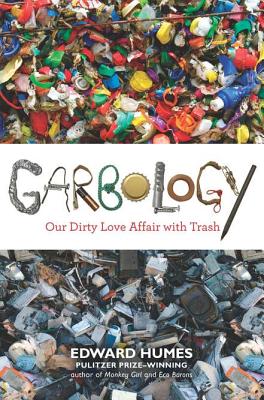 Garbology is one of the best environmental books I've ever read, and coming from me that's saying quite a lot. Not only is the book accessible to anyone, it's also insanely interesting to anyone. Humes is an excellent writer and journalist. His statistics and sources are well cited and researched, and always relevant.
Garbology is one of the best environmental books I've ever read, and coming from me that's saying quite a lot. Not only is the book accessible to anyone, it's also insanely interesting to anyone. Humes is an excellent writer and journalist. His statistics and sources are well cited and researched, and always relevant.The subject of trash is an interesting one and something I've spent a lot of time thinking about. We all create trash and by putting it in the trash can and setting the trash can on the curb, we believe we are doing our part in protecting the environment by not littering. But where does it all go? By sending it away to a dump are we really avoiding litter? What really constitutes as litter anyway? More importantly, why do we create so much trash to begin with?
Humes starts the book in the most logical places one can start a book about trash: the dump. He begins the book by presenting the problem of garbage and the ever-looming question of what to do with it all. He then gives a detailed and fascinating history of how trash was dealt with before the modern dumps, before we needed empty canyons to fill, because we wasted less, though Humes points out that trash was no less of an issue then as it is now. He moves on to rogue trash, which doesn't make it to the landfill, and often ends up in the ocean, which has turned into a kind of plastic soup.
The second part of the book is dedicated to the study of trash, garbology. Humes proposes that knowing we have a problem is not enough, we must get to the cause and the cultural habits behind the problem. Here he turns to the worlds first garbologist. Bill Rathje can probably go through your trash and know your household size, age range, income, and personal habits, without ever meeting you. There's a lot of information out there abut trash, and he is the original trash fact-checker.
A team of people set up a trash tracking system to study where garbage goes after it is discarded and how long it takes to get there. The results were scary. Some bits of trash, especially recycled electronics (printer ink cartridges were the worst offenders) were shipped thousands of miles, back and forth across the country for days. Even though these things are being recycled (we hope), the system itself is so wasteful it's better to stick with reducing waste, rather than thinking we're off the hook by recycling.
The final part of the book is dedicated to solutions, from high-tech, large scale solutions, to simple at home solutions. He gives us the story of Bea Johnson, whose family throw away virtually nothing. Their households yearly waste can fit into a mason jar. I thought I was doing well with only a five gallon bucket every three months, but suddenly I found myself a little jealous. I tend to agree with the low-tech solutions, mostly because the problem started with an abundance of technology and consumerism. Personally, I think the best way to solve the problem of over-consumption is to stop consuming, though the thought of a garbage death ray is pretty rad, I must admit.
I've persevered through enough non-fiction to know that it can get rather dry and dull. I've enjoyed books that I could never call page-turners, however, this book is absolutely a page-turner. It has a very clear beginning, middle, and end. In fact, as soon as I finished it, I couldn't wait to share the book with several other people. I even went as far as calling a bookstore in Sante Fe, to purchase a copy for a friend who lives there. I'll often mail a book to someone who I know would enjoy it, but I'm not really willing to part with this one permanently.
Buy it indie!
No comments:
Post a Comment